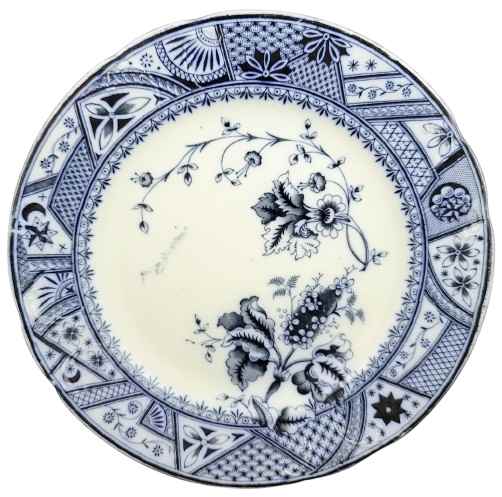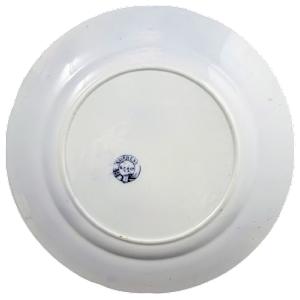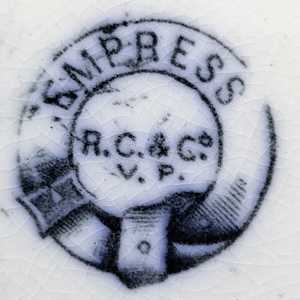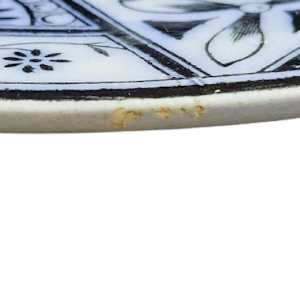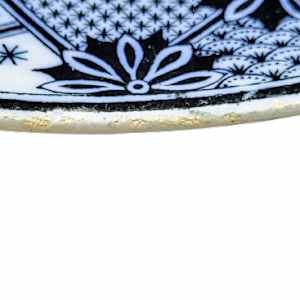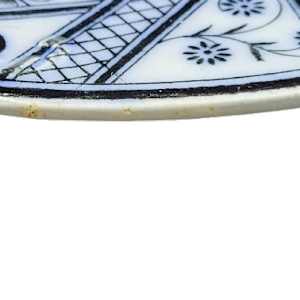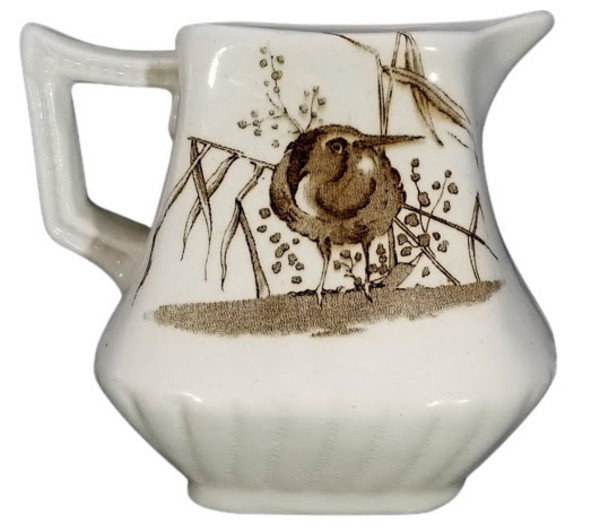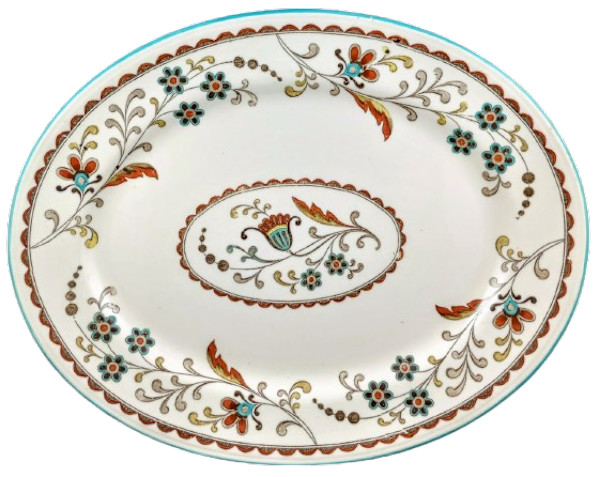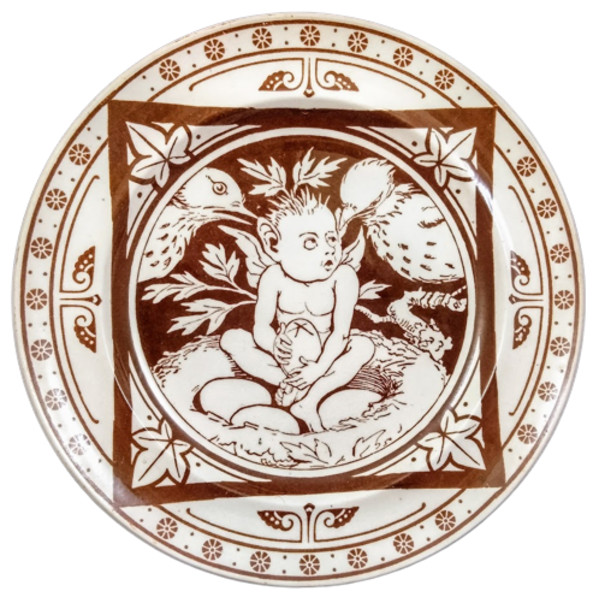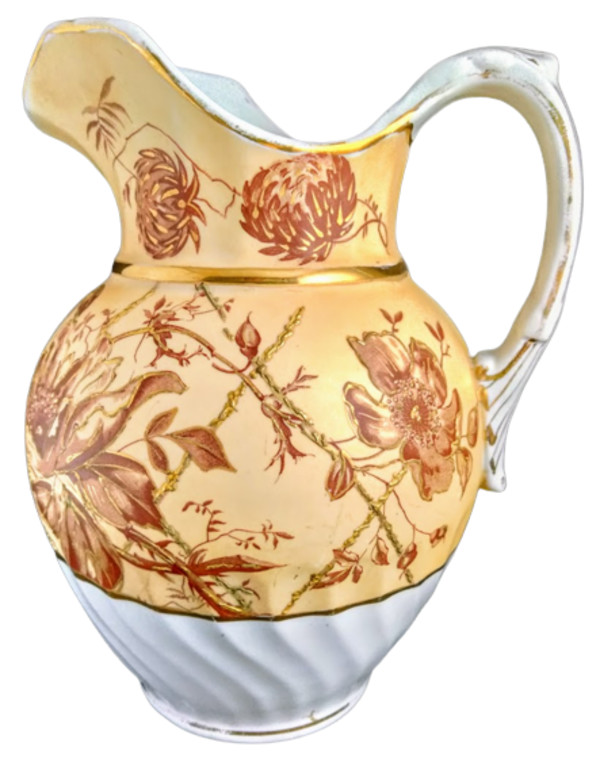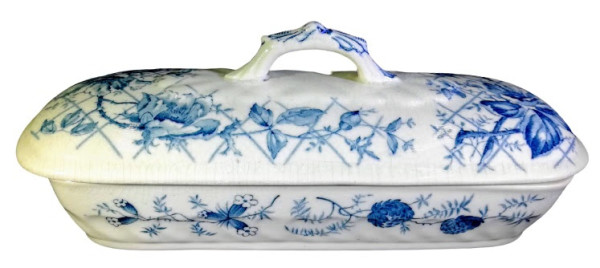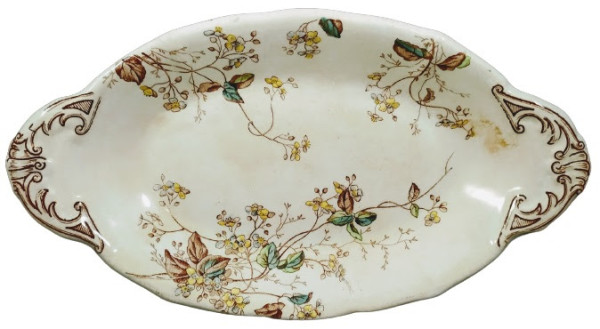- Robert Cochran & Co.
- Empress, c. 1845-1890
- Earthenware
- 10.5 x 10.5 in (26.67 x 26.67 cm)
-
Not For Sale
Plate, 10.5 inches diameter. Blue transfer. Printed maker's mark for Robert Cochran & Co. This pattern features a curving stem with several different types of fanciful flowers and leaves emerging from behind a wide border. The border consists of a patchwork of geometric and stylized floral motifs.
The Verreville pottery was taken over in 1845 by Robert A. Kidston, Robert Cochran and his brother Alexander, Charles Watson, and Robert Goodwin. Kidston, Watson, and Goodwin quickly left. Alexander Cochran managed the glassworks and Robert focused on the pottery. From 1845 until 1918, three generations of Robert Cochran ran the pottery until its closure. Robert Cochran Sr. established a purpose-built factory in the 1850s at St. Rollox, slightly North of Glasgow center. This pottery was named Britannia and the Cochran family ran both sites for two generations. As a result, both potteries often used the same mark “R. C. & Co.” or “R. Cochran & Co.” – also sometimes sharing the same patterns. From 1845 until 1918, the Cochrans dropped all unprofitable lines and made just white and colored earthenware for the home and overseas markets. The most popular transfer-printed ware being the “Syria” pattern, which was made in abundance. The 1860s-70s saw the pottery specialize in jugs. Large dinnerware sets were also produced. Spongeware was created throughout the existence of the pottery but is never marked and is said to have been exported to Asia.
- Subject Matter: Aesthetic (Floral & Botanical)
- Collections: Aesthetic Transferware, Robert Cochran & Co., Scottish Pottery (1800-1930)
